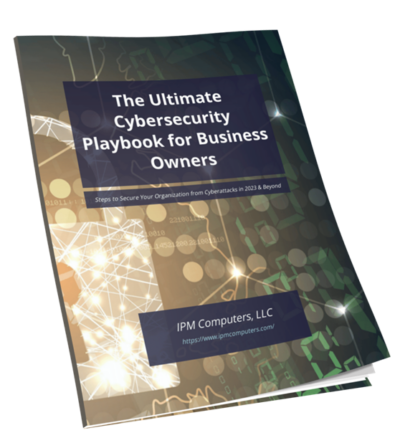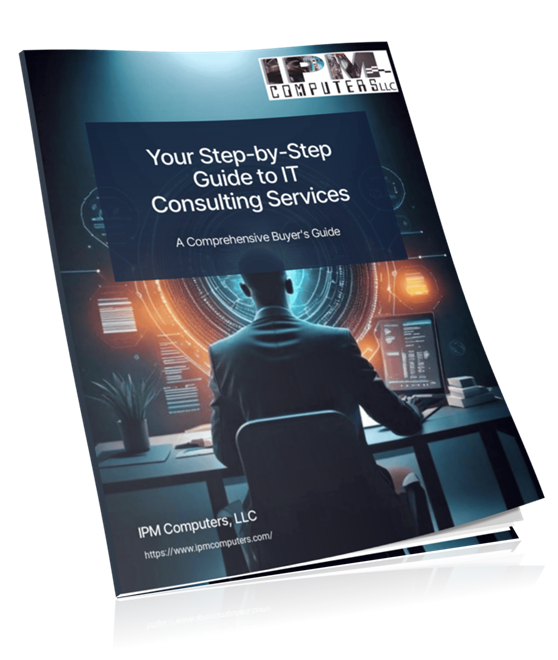In today’s rapidly evolving technological landscape, businesses of all sizes must grapple with the decision of whether to rely on managed IT services or establish an in-house department. The choice between these two approaches can significantly impact a company’s efficiency, cost-effectiveness, and ability to stay competitive. With advancements in cloud computing, cybersecurity threats, and the need for round-the-clock support, making the right decision has never been more crucial.
This article delves into the pros and cons of both options, providing valuable insights that will aid business owners and managers in determining which path is most suitable for their unique needs. By exploring factors such as budget considerations, expertise requirements, scalability demands, and technology trends shaping today’s business environment, this comprehensive guide aims to simplify the often-daunting task of choosing between managed IT services and an in-house IT team. Whether looking to optimize operations or navigate potential risks effectively, this article equips professionals with essential knowledge ensuring they make informed decisions that align with their strategic goals while maximizing technology-driven opportunities.
Comparing Managed IT Services vs In-House IT
In today’s ever-changing digital world, businesses are faced with the dilemma of choosing between managed IT services and establishing an in-house IT department. This decision holds immense significance as it directly affects a company’s efficiency, cost-efficiency, and overall competitiveness. With technological advancements such as cloud computing and the growing threat of cybersecurity breaches, making the right choice has become more critical than ever before.
Managed IT services offer several benefits for businesses looking to outsource their IT needs. One major advantage is access to a team of experienced professionals who specialize in various aspects of technology management. By partnering with a reputable managed service provider (MSP), companies can tap into this expertise without having to hire individual experts or invest heavily in training existing staff members. MSPs provide round-the-clock support, ensuring that any technical issues are promptly addressed regardless of time zones or holidays.
On the other hand, establishing an in-house IT department allows companies to have direct control over their technology infrastructure and operations. Having dedicated internal staff means faster response times for troubleshooting or implementing new solutions tailored specifically to meet business objectives. Organizations also may feel more secure knowing that sensitive data is handled internally rather than being shared with third-party providers.
When deciding between managed IT services vs in-house IT departments – there isn’t a one-size-fits-all answer since each option presents unique opportunities and challenges depending on factors such as industry requirements cost considerations, and long-term goals. Businesses need careful evaluation weighing their specific needs, budgetary constraints, risk tolerance, and available resources before making this crucial decision. Then whether opting for external expertise through managed services or building internal capabilities, it’s important to choose what aligns best with overall strategic vision and enabling growth.
Analyzing Costs
Analyzing costs is a crucial aspect of deciding between managed IT services and an in-house IT department for businesses. When considering the financial implications, it is essential to assess both short-term and long-term expenses.
In terms of managed IT services, businesses benefit from predictable monthly fees, as providers offer various pricing models based on specific needs. These costs typically cover hardware and software maintenance, security measures, data backups, system upgrades, and round-the-clock support. By outsourcing IT operations to a dedicated service provider, companies can avoid hefty upfront investments in infrastructure and staffing.
On the other hand, establishing an in-house IT department involves significant initial expenses related to hiring qualified personnel, purchasing necessary equipment, and training employees within the organization’s working hours.
When weighing the cost of managed services against maintaining an internal department to handle sensitive information, it is imperative to consider the additional risks associated with either option. Managed services typically come with access to expert security services and proactive monitoring, while internal departments often have more control over day-to-day matters. However, if critical data is compromised due to a cyber-attack, performance could be irrevocably affected, and businesses would struggle to recover from such a breach. Therefore, it is vital that organizations of all sizes put in place strong cybersecurity measures in order ensure business continuity and stay competitive in their respective markets.
Cost analysis isn’t just about money but also strategic decision making. Weighing up the value-added benefits of different approaches will provide operational efficiencies to ensure competitiveness in an ever more digital global marketplace. By understanding the pros and cons of managed IT services versus an in-house department, businesses can make informed, well-rounded choices that align with their long-term goals and use their resources efficiently. Having a sound grasp on technology is essential to maintain a competitive edge within industry undertakings, taking into account varying budgets and capabilities when making corresponding decisions for your business.
Evaluating Efficiency
When evaluating efficiency, it is essential to consider factors such as response time, resource allocation, and scalability. Managed IT services are known for their ability to provide quick response times due to their dedicated support teams that prioritize resolving any issues promptly. In-house IT departments may struggle with this aspect if they have limited resources or a small team managing multiple responsibilities.
Managed IT services can effectively allocate resources since they often work with multiple clients simultaneously. They have the experience and expertise to determine which processes should be prioritized, ensuring efficient use of time and manpower. On the other hand, in-house IT departments may face challenges when it comes to balancing various tasks within limited resources.
Scalability also plays a vital role in evaluating efficiency. Managed service providers allow businesses to scale up or down based on their needs without disruptions or constraints caused by limited internal capabilities. This flexibility provides cost-effectiveness as companies only pay for the services they require at any given time while still having access to advanced technologies and specialized skills readily available through managed service agreements. In contrast, an in-house department might need additional training or hiring efforts during periods of growth or organizational changes.
Ultimately, when assessing efficiency between managed IT services versus an in-house department, businesses must consider response time reliability, optimized resource allocation practices that allow them continuous adaptability along with scalable options necessary for long-term success in today’s technology-driven marketplace.
Assessment of Resources
Assessment of resources is a critical factor when choosing between managed IT services and establishing an in-house department. Before deciding, business owners need to thoroughly evaluate their existing resources, both in terms of technical capabilities and human capital.
When considering managed IT services, businesses should assess their current infrastructure and whether it can support the integration of external systems seamlessly. This involves analyzing hardware and software requirements as well as network capacity to ensure smooth operations with the service provider. Companies should also consider whether they have qualified staff who can effectively manage the outsourced service relationship.
On the other hand, an assessment of available internal resources is essential for establishing an in-house IT department. Business owners need to evaluate if they have the necessary funding and expertise to hire skilled professionals capable of handling all IT needs internally. It requires looking into aspects such as recruitment processes, training programs for employees or potential skill gaps within existing teams that may need addressing.
By conducting a thorough assessment of their resources before deciding on either option, businesses can gain insight into which approach aligns best with their specific needs and capabilities while ensuring maximum efficiency and cost-effectiveness. The most important thing to remember is that understanding resource constraints helps make an informed choice that benefits long-term success.
Assessing available technical infrastructure along with human capital is crucial when evaluating managed IT services versus establishing an in-house department. Such evaluations provide valuable insights about compatibility issues or resource scarcity that may hinder effective implementation or maintenance with either option chosen by businesses today.
Making the Right Choice for Your Business
In today’s fast-paced business environment, the decision to opt for managed IT services or establish an in-house IT department is a critical one. This choice can have far-reaching consequences on a company’s efficiency, cost-effectiveness, and overall competitiveness. With the ever-advancing field of cloud computing, constant cybersecurity threats looming, and the need for round-the-clock technical support, finding the right solution has become increasingly crucial.
Managed IT services offer several advantages that can greatly benefit businesses. They provide access to specialized expertise without the need for recruiting and training in-house staff members. The ability to tap into experienced professionals allows companies to stay up-to-date with rapidly changing technologies while ensuring their systems are well-maintained and optimized. Additionally, outsourcing IT services often proves more cost-effective as it eliminates the need for costly investments in hardware and software infrastructure.
However, establishing an in-house IT department also offers its own set of benefits. Having dedicated personnel on-site enables faster response times when technical issues arise and allows for better customization according to specific business needs. In-house teams develop intimate knowledge of internal systems over time which aids troubleshooting processes exceptionally well.
Managed Services in Kure Beach NC
Regardless of the choice made by each individual business owner, it is clear that both managed IT services and in-house departments play significant roles in today’s technological landscape. The key is finding a balance that maximizes efficiency while staying within budgetary constraints – ensuring continued competitiveness in an increasingly technologically driven world. Choosing between managed IT services and in-house IT can be a critical decision that has a significant impact on your business’s efficiency and success. While in-house IT may offer more control and customization, it often comes with higher costs and limited expertise. On the other hand, managed IT services like Kure Beach MSP from IPM Computers provide expert solutions, proactive maintenance, and cost-effective support tailored to your specific needs.
By partnering with a trusted managed service provider, you can focus on your core business objectives while leaving your IT worries in capable hands. Don’t hesitate to contact IPM Computers today to explore how our Kure Beach MSP services can revolutionize your IT infrastructure and propel your business forward.






